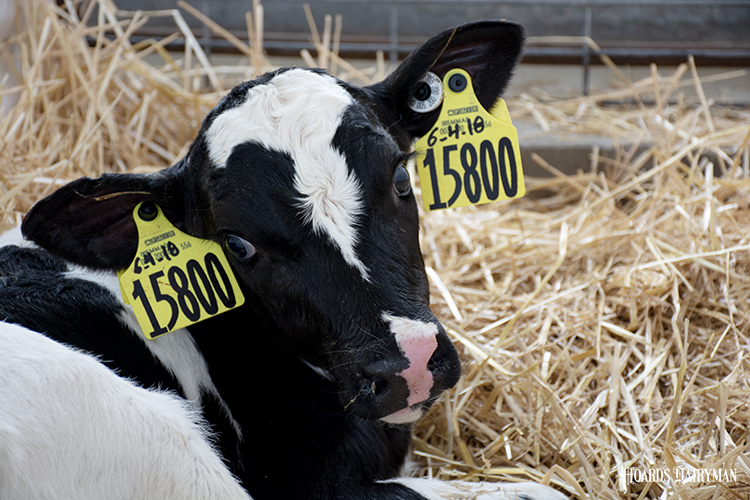
No one has a crystal ball, but dairy farmers have embraced genomic testing because it provides as good of a look into a calf’s productive future as anything. From that information, farms can decide which animals will be the most valuable to their herd and make decisions that will enhance profitability down the road.
Researchers at Purdue University recently analyzed if there are more ways we can estimate a calf’s future productivity — namely, by looking at measurements that are often already taken on farms. From a 5,000-cow dairy, they studied records from farm management software, the eight calf autofeeders, temperature and humidity loggers, and genomic predictions to see if any early life factors could be used to predict future performance.
There were many factors that could be measured in the first 60 days of life that showed a correlation with future body weight, described Jackie Boerman during the Dairy Cattle Reproduction Council annual meeting. Unsurprisingly, calves that weighed more at birth and drank more milk as a calf were eventually larger. Boerman did note that there may be a point of diminishing returns in this area. Some calves were drinking more than 20 liters of milk a day because they were allowed to, which could represent more cost than benefit.
Calves that were the lightest at birth drank slower and consumed less milk, also inhibiting growth. That was also true of calves that experienced respiratory disease, which the assistant professor described as possibly an effect of the calves developing lung consolidation and not being able to fully recover their drinking capability. A discovery in this study that Boerman said needs further investigation was that calves from first lactation cows drank less milk, even independently of birth weight.
Heifers born from those first-calf animals were a bit more efficient, though. While they were drinking less, they also calved for the first time at an earlier age and caught up to their herdmates in terms of body size just fine, said Boerman.
Although body weight plays an important role in productive capacity, reproduction is also a key factor. Pregnancy risk was most affected by respiratory disease among the factors they studied, where calves that were never treated had just a 19% chance of not being pregnant by 483 days of age. That jumped to 34% for calves that had been treated at least three times for respiratory disease. For future milk production, genetic selection had the greatest impact, Boerman continued.
Their research showed just how much future performance can be estimated by measurements and observations made in the first few months of life, Boerman emphasized. A few relationships they discovered can be explored more, such as the fact that which autofeeder the calf drank through affected body weight significantly. This may be due to providing less maintenance and monitoring in the years after a machine has been installed, she theorized. Uncovering these questions and more can help us further understand the future value of calves at a young age and make better herd management decisions.








